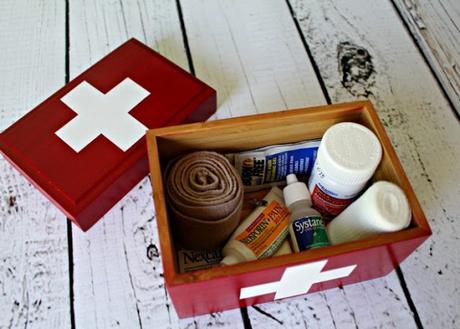
Essentials in a Home Made First Aid Kit
There had been times, where every one of us had to use a first aid kit at least once in our life. First aid is the immediate assistance given to an individual suffering from minor or any serious injury, and thereby a kit for the same comes way too handy in cases of need. There are a number of First Aid Kits available online as well as offline to purchase, but if you take a closer look at the contents in it, you can easily make it of your own. And guess what, when you make your own first aid kit, it, of course, gets customized according to the way you want/need it, and also it comes at a pretty much lower cost than the one which needs to be purchased as a whole.
So what all should be there inside a Home-made First Aid Kit?As such, there is no such universal agreement on the contents of a first aid kit. The basic home first aid kits are generally to treat mild injuries like:
- Burns,
- Cuts,
- Sprains,
- Fever,
- Pains,
- Stings etc
Though this is definitely not a comprehensive list, these are the basic and kind of ailments that can be treated without the supervision of a medical professional.So for the above ailments, you can definitely make your own first aid kit and these are the required contents for it:
An Antiseptic Wash:
Antiseptic wash or antiseptic wipes are the ones that come very handy and useful to clean a fresh wound when you don’t have access to soap and water. This also can be used to clean the hands of the person who is going to administer the first aid.
Sterile Gauge Pad and Scissors:
Gauze pads should always be part of a first aid arsenal. It can be used to stop bleeding or to cover a wound that an adhesive bandage (band-aid) won't accommodate. A good gauge pad should be 3inchx3inch or 4inchx4inch. And of course, a good pair of scissors is a mandate, for trimming gauge pad or snipping a cloth piece, etc.Instant Cold Packs:
These are available easily in pharmacies and are very useful in cases of sprains, twists, or even small burns. As ice might not be always available, this one comes super handy!Antibiotic Ointment:
In cases of the wound, antibiotic ointments sold under these generic names as well as various brand names, such as Neosporin and Mycitracin are extremely effective to stop the growth of bacteria in the wounded place and prevent it from getting infected.Paracetamol:
This is one very versatile medicine that can treat mil fever and also is to a good extent helpful in treating mild pains. Thus, paracetamols from any brand are very much necessary.Pain Relief gel/spray:
In cases of parts of the body where gauge application is difficult, the pain-relieving gel or spray comes to rescue! Also, in addition to these, a list of family member's medical history, medications, doctors, insurance companies, and contact persons should be noted and kept in the first aid kit.For the first aid kit bag:
- Remember, the bag need not be something fancy, or specifically a “medical bag”. You can even use your cosmetic bags to accommodate the necessaries.
- Prefer a bag which is waterproof
- It would be best if you have compartmentalized sections in the bad to keep the things in compartments which come very handy when required!
- Moreover, keep the kit should be kept in a place that is easily accessible by all in the family!!
Do remember, first aid kits are intended to help manage a non-emergency injury or other medical issues on the spot by even non-medical personnel. For serious problems, definitely do contact the nearest medical facility centre!

